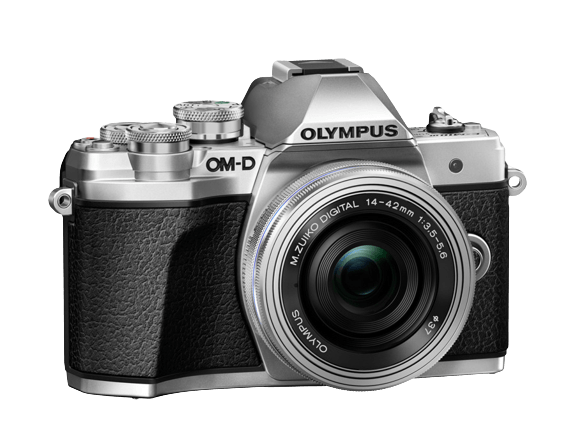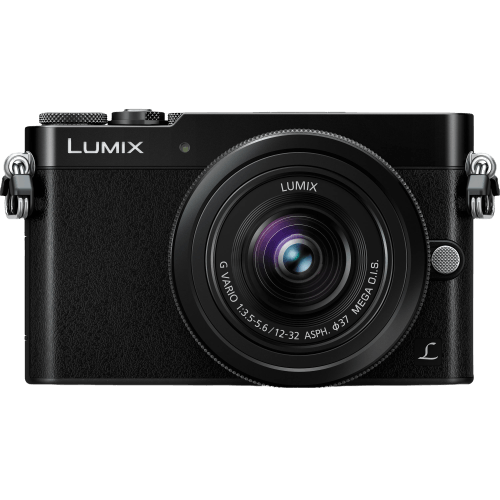Olympus OM-D E-M10 vs Panasonic Lumix DMC-GM5 Comparison
Olympus OM-D E-M10

Panasonic Lumix DMC-GM5

The Olympus OM-D E-M10 outperforms the Panasonic Lumix DMC-GM5 with a score of 54/100 compared to the latter’s 48/100. Both mirrorless cameras were released in 2014, with the E-M10 announced on January 29th and the GM5 on September 15th. They share similarities in their launch prices, with the E-M10 priced at $700 and the GM5 at $650.
The winning E-M10 has an edge in terms of size and weight, measuring 119 x 82 x 46mm and weighing 396g (0.87lbs). On the other hand, the GM5 is smaller and lighter, with dimensions of 99 x 60 x 36mm and a weight of 211g (0.47lbs). This makes the GM5 more portable and easier to carry around.
Considering the scores and specifications, the Olympus OM-D E-M10 is the better choice for those who prioritize performance and overall quality. However, the Panasonic Lumix DMC-GM5 may be preferable for users who value portability and a more compact design.
Olympus OM-D E-M10 vs Panasonic Lumix DMC-GM5 Overview and Optics
The Olympus OM-D E-M10 triumphs over the Panasonic Lumix DMC-GM5 in optics, with a score of 57/100 compared to the GM5’s 49/100. Both cameras share common specifications such as 16 and 16.1 megapixels, CMOS sensor type, Micro Four Thirds sensor size, and Micro 4/3 lens mount.
The E-M10 outshines the GM5 in several aspects. Firstly, it has a superior shooting speed of 8 frames per second, while the GM5 lags behind at 5.8 frames per second. Secondly, the E-M10’s TruePic VII processor contributes to better image processing than the GM5’s Venus Engine. Furthermore, the E-M10 boasts a higher DXOMARK score for its sensor, 72 as opposed to 66 for the GM5, indicating improved image quality. Lastly, the E-M10 features image stabilization, which the GM5 lacks, making the E-M10 more suitable for capturing sharp images in various conditions.
On the other hand, the GM5 has only one advantage, which is its slightly lower megapixel count (16) compared to the E-M10’s 16.1. This difference, however, is negligible and does not significantly impact image quality.
Taking all factors into consideration, the Olympus OM-D E-M10 emerges as the superior camera in terms of optics. Its faster shooting speed, better processor, higher DXOMARK score for the sensor, and image stabilization make it a more reliable choice for photographers seeking excellent image quality. The Panasonic Lumix DMC-GM5, with its marginally lower megapixel count, fails to offer any significant advantage over the E-M10 in this comparison.
Olympus OM-D E-M10 vs Panasonic Lumix DMC-GM5 Video Performance
The Panasonic Lumix DMC-GM5 emerges as the winner in the video capabilities department, scoring 70/100, while the Olympus OM-D E-M10 trails behind with a score of 57/100. Both cameras share some common specifications, such as Full HD video resolution, 1920 x 1080 video dimensions, and built-in time-lapse functionality.
The Lumix DMC-GM5 outperforms the OM-D E-M10 with its higher video frame rate of 60fps, compared to the 30fps offered by the E-M10. This higher frame rate allows the DMC-GM5 to capture smoother and clearer videos, especially when recording fast-moving subjects or scenes.
The OM-D E-M10 does not have any significant advantages over the DMC-GM5 in terms of video capabilities. Both cameras share the same maximum video resolution and dimensions, and both have time-lapse functionality built in. The lower video frame rate of the E-M10 makes it less suitable for capturing fast action compared to the DMC-GM5.
Considering these factors, the Panasonic Lumix DMC-GM5 is the superior choice for video capabilities, thanks to its higher video frame rate of 60fps. The Olympus OM-D E-M10, while still offering decent video performance, falls short in this aspect due to its lower frame rate of 30fps.
Olympus OM-D E-M10 vs Panasonic Lumix DMC-GM5 Features and Benefits
The Olympus OM-D E-M10 outperforms the Panasonic Lumix DMC-GM5 with a feature score of 57/100, compared to the Lumix’s 54/100. Both cameras share several specifications, including a 3-inch screen size, touchscreen functionality, and the absence of GPS and Bluetooth. They also both have WiFi capabilities.
The OM-D E-M10 surpasses the Lumix DMC-GM5 in screen resolution, coming in at 1,037,000 dots, while the Lumix has a lower resolution of 921,000 dots. This higher resolution provides a clearer and sharper display, allowing for better image previews and easier menu navigation. Another advantage of the OM-D E-M10 is the presence of a flip screen, which the Lumix lacks. The flip screen offers flexibility for composing shots from different angles and is useful for vlogging or taking selfies.
On the other hand, the Lumix DMC-GM5 does not have any distinct advantages over the OM-D E-M10 in terms of features. Both cameras have equal screen size, touchscreen, WiFi, and lack GPS and Bluetooth.
Taking into account these points, the Olympus OM-D E-M10 emerges as the superior choice due to its higher screen resolution and the added convenience of a flip screen. The Panasonic Lumix DMC-GM5, while not offering any unique advantages, remains a solid option for those who prioritize compactness and simplicity.
Olympus OM-D E-M10 vs Panasonic Lumix DMC-GM5 Storage and Battery
The Olympus OM-D E-M10 triumphs over the Panasonic Lumix DMC-GM5 in storage and battery with a score of 21/100 compared to the Panasonic’s 13/100. Both cameras share similarities in this aspect, such as having one memory card slot and accepting SD, SDHC, and SDXC memory cards. Neither camera offers USB charging.
The Olympus OM-D E-M10 outshines the Panasonic Lumix DMC-GM5 with its longer battery life of 320 shots, utilizing the BLS-5 battery type. This advantage makes the Olympus OM-D E-M10 a more reliable choice for extended shooting sessions.
On the other hand, the Panasonic Lumix DMC-GM5 falls short with a battery life of only 220 shots, using the DMW-BLH7 battery type. This shorter battery life may prove limiting for users who require longer shooting times without changing batteries.
Taking the storage and battery aspects into account, the Olympus OM-D E-M10 proves to be the superior choice due to its longer battery life, while the Panasonic Lumix DMC-GM5 may not be ideal for those needing extended shooting capabilities.
Olympus OM-D E-M10 vs Panasonic Lumix DMC-GM5 – Our Verdict
Are you still undecided about which camera is right for you? Have a look at these popular comparisons that feature the Olympus OM-D E-M10 or the Panasonic Lumix DMC-GM5:
